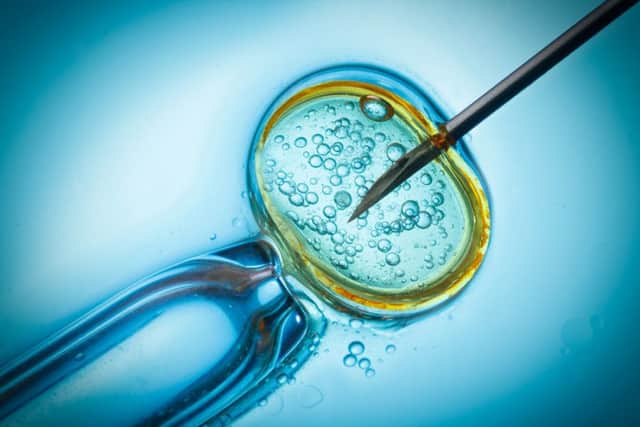Call for tougher IVF regulation


They want firms a clear list of ingredients for the solutions like those used to regulate food such as peanut butter.
The demand follows the results of a trial that shows that the composition of these laboratory cultures influence the health of the resulting embryos and babies.
Advertisement
Hide AdAdvertisement
Hide AdThe trial found that they affected the numbers of viable embryos created, the rates of successful implantation in the womb, the pregnancy rates and the babies’ birthweights.
The findings were published in the journal Human Reproduction, together with a second paper that reviews what is currently known about embryo culture media.
The second paper concludes: “There is a strong case for demanding full transparency concerning the compositions of and scientific rationale behind the composition of embryo culture media”.
The journal’s editor-in-chief, Professor Hans Evers, called for “urgent action” by industry and regulators in the wake of the findings, saying that, just as with foods such as peanut butter, the exact composition of the culture media should be listed.
Advertisement
Hide AdAdvertisement
Hide AdHe said: “Floating an embryo for only a few days in a culture medium affects the birthweight of IVF children nine months later.
“Small differences in birthweight may reflect more subtle disturbances that only will manifest themselves later in life.
“As of today, not knowing the exact composition of their IVF culture media is no longer an option for clinical embryologists.”
Dr John Dumoulin, the IVF laboratory director at Maastricht University Medical Centre in The Netherlands, and his colleagues recruited 836 couples who were scheduled for IVF or ICSI (intracytoplasmic sperm injection) treatment at one of 10 IVF centres.
Advertisement
Hide AdAdvertisement
Hide AdDr Dumoulin said: “For the first time, by means of a large randomised controlled trial, we have shown that human embryos that are cultured in vivo are sensitive to their environment and that something is programmed into these embryos during those few days before transfer to the womb that still has an effect nine months later.
“This being the case, we must be aware that David Barker hypothesised that the environment in early life, from foetus to the first two years of life, can have a significant effect on long-term health.
“This means that we should be careful and we should no longer blindly accept new culture media, or other alterations in laboratory or clinical procedures, without first rigorously studying effectiveness and safety.”
In the second paper, a working group of the European Society of Human Reproduction and Embryology, led by Professor Arne Sunde, of the University Hospital in Trondheim, Norway, made the same recommendations.
Advertisement
Hide AdAdvertisement
Hide AdTheir research showed that culture media vary widely, their composition is usually unknown by the embryologists, doctors and patients, and figures about the influence of the media on outcomes are conflicting.
Prof Sunde said: “The key issue is that we must know the composition of the culture media we use, since it seems to induce differences in the make-up of the children born.
“We have no information about long-term consequences of this, but we cannot rule out that the composition of the culture media may affect the health of children as they grow up and become adults.”
At present, there is no uniform regulation of embryo culture media. In Europe, the majority of media approved for use carry the CE mark, but other non-CE media can still be used.
Advertisement
Hide AdAdvertisement
Hide AdProf Sunde added: “It is not obligatory to declare changes and the information we might get is far from sufficient.
“We want to know in detail what changes have been made and the scientific basis for the changes, including animal and human clinical data backing the change.”